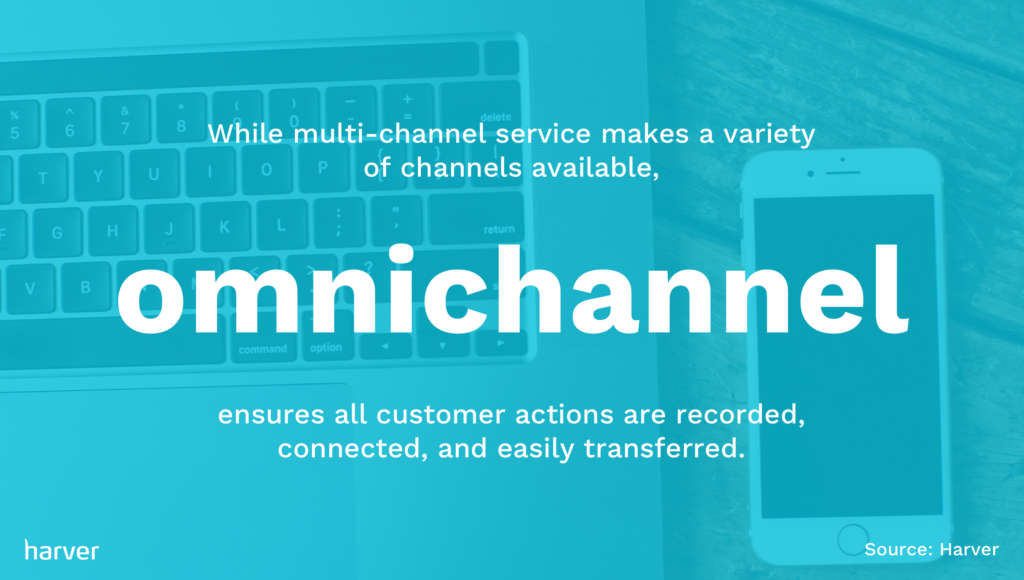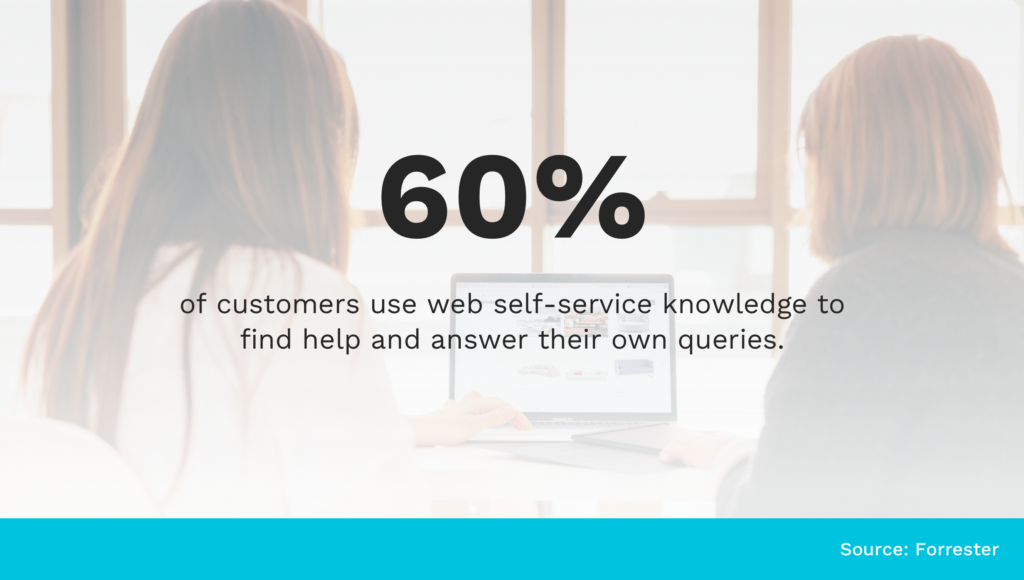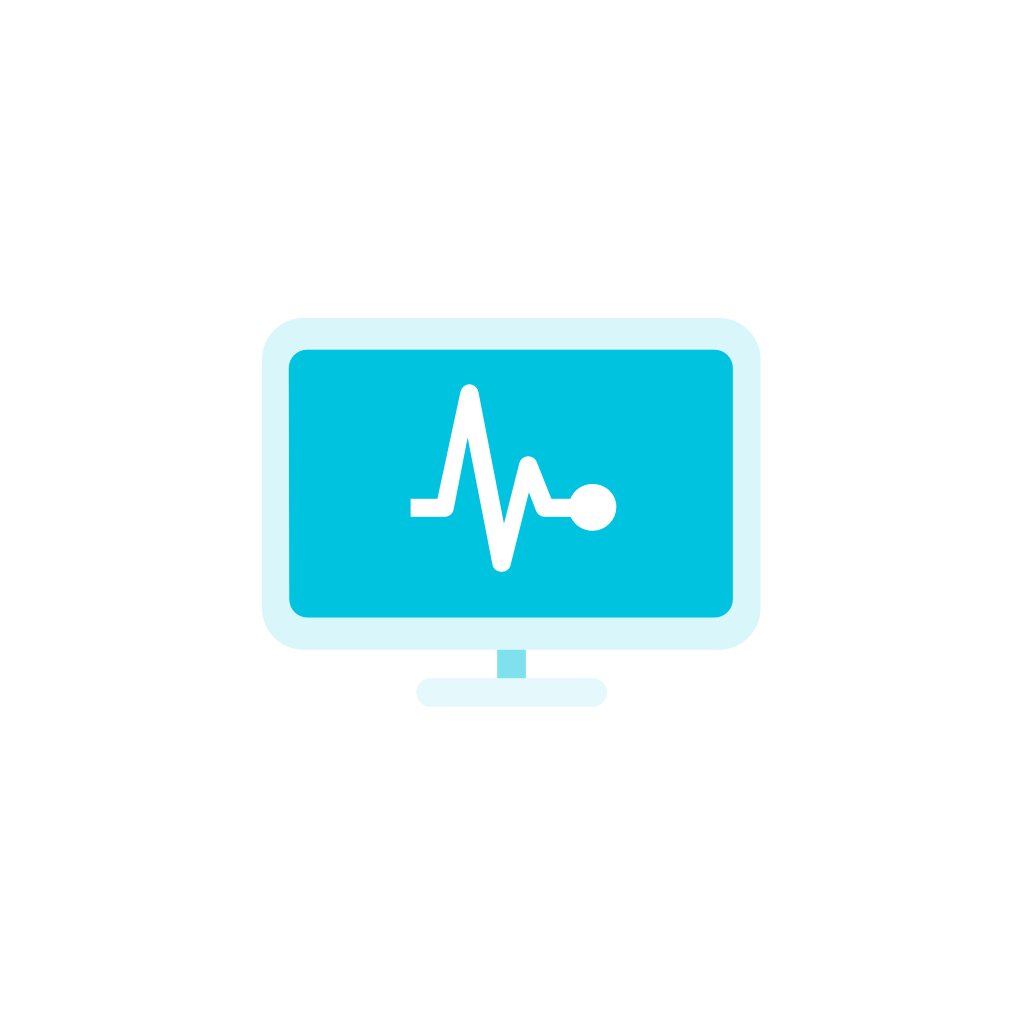The world has gone digital, and contact centers and BPOs must go digital too. It’s no secret that the world of customer support has changed in the last year. With more and more consumers turning to support agents for help with online orders, health claims, financial services – to name a few!
But, even before COVID-19, contact centers were seeing increased demand. In fact, in 2019 alone, there were 2.92 million contact center employees in the US, representing an increase of 1.74% from the previous year.
But, with growth comes new challenges. Most notably, customers demand faster and better service through a more diverse set of channels. That’s a lot for contact centers to keep up with.
From hiring to onboarding, training, and daily tasks – there are plenty of opportunities to innovate, and now’s a perfect time.
So, as you plan your year, let’s look at the tools you’ll need to thrive amidst rapid growth and change…
What’s in?
Like what you see?
Don’t miss out. Subscribe to our quarterly digest to get the latest TA and TM resources delivered right to your inbox.
What Challenges Should I Prepare for?
Before we dive into the tools, let’s talk about what you’re preparing your team for.
We’ve seen new trends emerge in 2020 that are here to stay. Most prominently, omnichannel customer service. This is undoubtedly on the up. For the uninitiated, this is where customers expect to reach brands using their preferred communication channel – whether it be phone, live chat, email, or via social media. Consequently, you need to offer a choice of ways customers can contact you.
Contact centers can also expect higher volumes of inquiries. Many centers are already meeting increased workloads by using AI and advanced self-service tools. The same is true of recruiting staff. With higher numbers of candidates seeking remote working opportunities, contact centers can anticipate increased interest across all their roles and should improve their hiring toolbox accordingly.
17 Tools Your Contact Center Should Have, and How to Select Them
As we all now know, any given year can bring a number of complex, surprising challenges. Innovating early and often is a surefire way to ensure you’re prepared, even for challenges you can’t anticipate. But, as with any organizational change, you want to make the right investment.
So, here’s a selection of both emerging and tried and true technology shaping the future of customer service (plus some insights on where to get them):
1. Pre-Employment Assessment Software
Pre-employment assessment software helps identify the best candidates for the job, by matching applicants to the skills and personalities needed for success. In contact center settings, they can also assist in creating authentic workplace simulations for the candidate to participate in, to help inform candidates and reduce attrition from misaligned expectations.
When evaluating the best pre-employment assessment software for your contact center, ensure it can measure the candidate’s performance using accurate metrics relevant to your business, and that it can support and automate high volumes of candidates to enable fast and cost-effective recruitment.
It’s imperative to pick software explicitly built for contact centers. You’ll also need to get a feel for the kinds of roles you’re recruiting for. This will help you pick software that can assess candidates for the necessary skills and characteristics. For instance, if you’re hiring chat support agents, literacy, multi-tasking, and written communication skills are vital. As such, you’ll need a platform that can test and evaluate these skills.
This is often the first step in innovating because customer service is a people-driven business. If you’re ready, have a look at our suite of tools tailor-made for the contact center industry – our friends at TTEC, Alorica, and Booking.com think they’re pretty great. Then, read on for other great solutions to set you up for success this year.
Ready to transform your hiring process?
2. Strong Candidate Sourcing Tools
To deliver the best service, you need the right team for the job, which is best achieved by sourcing top talent from various backgrounds. On the face of it, this sounds like a nice-to-have, time-consuming task, but, if you want your pre-employment assessment to have the biggest impact, you’ll have to start first with sourcing strong candidates.
From resume databases, AI-powered candidate engagement tools, to networking platforms, there are plenty of resources you could tap into.
Pro Tip: Using non-traditional media to stand out is key to innovating in this field. For instance, podcasts and video content can work wonders for reaching new candidate pools.
We’ve got a list of sourcing tools we think are great, plus Arya, Fetcher, and for the contact center industry: don’t discount the power of Facebook, especially outside of the United States.
3. Onboarding
As many as 69% of employees are more likely to stay with a company for at least three years if they have a good onboarding experience.
The moral of the story? To improve employee retention, a high-quality onboarding process is vital. You can make that happen by using software to organize HR documents, communicate clearly with new hires and automate an optimized onboarding plan.
The right onboarding software will:
- Deliver relevant documents to your candidates ahead of time
- Introduce recruits to essential team members
- Email them their schedule and ensure all necessary forms are signed before their first day
- Provide them with a warm welcome, ensuring all their questions are answered quickly
This leaves you and your recruits plenty of time to hit the ground running when they arrive for their first day.
If you have an ATS, you should be able to leverage built-in onboarding tools for a seamless experience or lean on a program like Rippling.
4. System Diagnostics
In 2020, we saw most jobs that were able to go digital transform into remote working roles. This is also true for contact centers, which makes the need for system diagnostics all the more critical.
System diagnostic software informs recruiters whether applicants have the necessary hardware and software to do the job tasks and run key programs. Suppose they don’t have a clear microphone to speak into or a reliable internet connection, it could result in inferior service for customers. You’ll need to know this from the get-go to ensure candidates have everything they need before their first day.
Pro tip: When hiring at scale, you’ll want to find a work-from-home system diagnostic that can automatically run during the application process, and send results to your ATS. If you need to send links or self-reporting forms back and forth to candidates, you’ll face a daunting administrative process and open up for potential erroneous self-reporting from candidates.
If you want an accurate, easy-to-use system diagnostic that integrates with your ATS, we offer a free 30 day trial of our industry-leading module used by some of the world’s largest contact centers.
5. Training Software
No matter a candidate’s previous experience, you’ll want to ensure they have the necessary training to follow company protocols and succeed in their role. Having a strong selection and on-boarding process also sets you up to make your training as effective as possible.
Always look for training expressly created for contact centers and BPOs, especially if it’s centered around a specific form of support (i.e. outbound sales training, live chat training). The right call center training software will improve your agent’s organizational, sales, and persuasion skills and provide a safe space to practice their skills. While online, self-directed learning can be time and cost-saving in some scenarios if you want to get the most out of it – look for a training program where progress is reported, and employees have someone to reach out to with questions.
For in-person or small group training, local providers are often the best bet for price and quality. For on-demand learning, look for an interactive program such as what is offered by The Contact Center School.
6. Omnichannel CRM
With omnichannel support becoming the new normal for contact centers and BPOs, finding the right CRM is vital for centralizing, tracking, and analyzing customer interactions.
Agents should be able to seamlessly:
- Pick up conversations started on one channel that moved over to another
- Track support tickets
- Match inquiries to the best-suited agent
- Collect customer information from a variety of channels.
- Track customer communication preferences

On top of that, a high-quality CRM should inform agents when it’s time to get in touch and through which channel.
When choosing an omnichannel CRM, ensure it supports all the comms channels you wish to offer customers – SMS messaging, social media, live chat, etc. You’ll also want to ensure your potential CRM supports mobile formats, as 52% of customers say poor mobile experience influences whether they do business with a company. And with as many as 90% of customers experiencing poor mobile customer service, this is certainly an area to leverage to stand out against your competitors.
A CRM is a major investment and will become an integral piece of your process, so it should be evaluated holistically. But, when focusing on innovation, two things should be top of mind: automation and AI capabilities to boost productivity and speed up customer interactions, and business intelligence to allow you to collect and analyze data to improve your processes.
There is no shortage of providers in the CRM space, but if you’re striving for innovation, look to: Zendesk, Pipedrive, Five9, or Twilio.
7. Call Routing
Call routing takes inbound calls and connects them automatically to the most qualified agent at the right time. This includes sending relevant customer information to the agent’s computer to help them resolve the issue. That way, customers won’t have to repeat their query or be transferred several times to reach a qualified agent.
When choosing call routing software, look for innovative features that will speed up service times and boost productivity, while improving the experience for customers.
For instance:
- Skills-based routing
- Integration with your omnichannel CRM
- Interactive voice response systems
- Automatic call distribution and overflow management
- Call recording, listen-in and analytics
These are just a few examples of how call routing has evolved to provide much more than a phone tree – you can find more use cases and innovative offerings from Aircall, Five9, and Avaya.
8. Cloud-Based Calling (VoIP)
Cloud-based calling works through a VoIP service provider; The system routes and converts analog voice signals into data transmitted over your internet connection. Not sold? By doing this, you can reduce your costs, improve voice quality, enable quicker scaling, create worldwide access, and boost reliability.
The market for cloud contact centers is expected to grow nearly 4X to a market size of 49.12 billion by 2025. To ride this growth wave, you’ll need to utilize the latest communications technology and make it easy to add new channels like SMS messaging, email, chat, and social media. Cloud calling also enables employees to access their work anywhere – smartphones, desk phones, softphones, etc. which have become a key benefit as many support roles have transitioned to remote work in lieu of the pandemic.
You can find a list of top-rated VoIP providers here.
9. Predictive Data Analytics
For most contact centers, basic data and analytics tools are already firmly integrated into their processes. But you can take this a step further with predictive data analysis. These generate actionable insights into both internal and customer-facing operations and trends, and there are multiple ways you can leverage tools depending on your focus. With this info to hand, you’re better positioned to make better business decisions.
Consider using predictive data analytics to:
- Improve hiring decisions with talent matching technology
- Boost customer retention with sentiment or speech analysis
- Select which customer queries warrant a call-back
- Analyze agent performance, allowing supervisors to see where assistance may be necessary
- Determine customer intent automatically based on phrases used, purchase history, support history
- Zoom out on requests trends to improve
You can find more details about the use of predictive data in recruitment here, as well as other uses in this study by McKinsey & Company. Once you’ve determined where in your business you’d like to deploy predictive analytics, search terms like “sentiment analytics,” “performance data analytics,” or “predictive hiring analytics,” will help kickstart your search.
Experience our best-in-class Live Chat Assessment first-hand!
Perfect for remote hiring, our live chat assessment makes it easier than ever to hire live chat agents. Candidates experience the job, while you get actionable data to drive hiring decisions.
10. Chatbots and Support Automation
In 2018 67% of customers had used chatbots, with 46% preferring contact with a live person. Now, chatbots are one of the fastest-growing support segments, helping to meet customer demand for round-the-clock service. As such, automated support needs careful navigation. You want to harness their benefits without frustrating customers who want personal, 1-1 support.
Like call routing, chatbots can identify customer queries and forward them to the most suitable agent or self-service documentation, opening opportunities for customers to avoid needing agent support entirely. Chatbots can also operate 24/7 to provide quick answers to FAQs, and can substantially improve your call or chat routing.
Look for software that comes with automation functionality to handle tasks like updating contact info, scheduling appointments, processing payments, or other menial tasks where self-service is highly appropriate. Your chatbot should also be able to create highly personalized experiences by integrating with your CRM.
Here are 10 options to get your chat bot search started.

11. AI and Machine Learning
Machine learning and AI have a variety of uses at contact centers, and while it’s true you can likely find an “AI” infused solution for any segment of your business, the strongest use cases are for driving customer loyalty, improving agent efficiency and productivity, and more intelligent call routing.
One of the most compelling uses of AI is to let it work in the background to help agents perform better. For example, AI might analyze a customer’s query and suggest four possible solutions to the agent. While the customer doesn’t see this, the agent can decide whether these prompts enhance their response. AI can also gather and present a customer’s historical info and suggest to the agent the reason for their call, helping to improve customer experiences and speed up resolutions.
Much like predictive analytics, the software you’ll invest in depends heavily on what area you intend to deploy AI or Machine Learning. We suggest beginning with deciding where you could benefit most. We might be biased, but we think recruitment is typically a great place to start.
12. Voice Response Technology (IVR)
Interactive voice response (IVR) is the chatbot equivalent for voice calls, and while it might sound like pretty common tech, it’s uses can’t be discounted. IVR allows organizations to interact with callers using automated menus. They might play a pre-recorded greeting, announce menu options, or confirm order numbers. The system then transfers them to a queue or offers self-service options.
Take, for example, providing meter readings for energy companies, or checking the balance of a gift card. This process is now entirely automated using this technology. The customer simply follows through the menu and enters the numbers themselves without speaking to an agent, allowing them to service themself at their convenience.
Like chatbots, it’s important not to overuse voice response technology. Only harness it for straightforward tasks that can be entirely automated or routing more complex queries. In any case, always make it easy for customers to speak to a live agent as soon as possible.
Plumvoice, Nice, Twilio and Dialpad offer a variety of IVR tech to get your search started.
13. Workforce Management
24/7 contact centers need someone available to answer queries at all times, and for global operations, the languages spoken by agents, as well as the channel of service or clients they work on, need considering as you schedule shifts.
Workforce management (WFM) tools are available to optimize staff schedules to ensure the contact center provides consistent service levels, and meets fluctuating demand. A good WFM will also come with analytic forecasting that anticipates workload and monitors activity to determine whether customer expectations are met throughout the day. On top of that, some systems can also provide managers and agents with immediate performance feedback.
We suggest starting with technology that is built into or can integrate with your ATS, like Workforce or RingCentral. If you use an ATS, the best place to start is their vendor marketplace to ensure seamless workflow.
14. Advanced Customer Self-Service Technology
Nowadays, 67% of customers prefer using self-service options over speaking to a company representative. Customers are increasingly tech-savvy and can perform their own research to adequately solve issues. For many consumers, this is faster and more satisfying than prolonged communication with an agent.

While interactive voice responses and chatbots play a role here, don’t overlook the importance of support documentation and a self-service help desk. Many helpdesk tools even provide tools for creating online support centers. Here customers can find the answers themselves to frequently asked questions, self-help guides, tutorials, and other helpful documents.
Zendesk and Nice both offer self-service technology.
15. Advanced Co-Browsing software
Co-browsing is a useful technology – especially in the IT sector and for SaaS providers. Co-browsing enables agents and customers to ‘browse’ a website together using a web or mobile app. Customers can show agents in their browser what they’re having an issue with, and agents, in turn, can demonstrate possible solutions. Even sales teams can make use of co-browsing software to consult prospects on the best products for clients.
Twilio, Nice, and Avaya are just a few of the providers that offer co-browsing software. You may notice on this list some providers appear across multiple tools – what a plus! Being able to bundle multiple technologies into one system will save you costs and create a better experience for agents and customers.
16. Voice Biometrics
Some contact centers handle highly sensitive information where fraud is a significant security concern. While it might sound like something from a sci-fi flick, voice biometrics are increasingly becoming a go-to technology for authenticating a person’s identity by evaluating their unique voice. This ensures the agents actually speaking to who they think they’re talking to, upholding customer privacy.
You can find a list of highly-rated providers here.
17. Intelligent CallBack
Suppose your contact center frequently experiences high volumes of callers, and your agents can’t get to everyone within a few minutes. In that case, intelligent call-back tech is vital to customer satisfaction.
This enables customers to opt for you to call them back rather than waiting in a lengthy, unpredictable queue that can easily cause irritation and lead to agitated customers. Intelligent CallBack enters customer requests into a waiting list so that your support agents know who to prioritize, and nobody is left listing to a repetitive dial tone.
Of course, for this technology to be a real benefit to customers, call-backs must be handled as a matter of urgency, just like live incoming calls. Customers that don’t hear back from a contact center when they’ve opted for a call back will be anything but pleased, especially if their issue is urgent.
Pro tip: Most VoIP providers offer intelligent callback – so double-check with them when buying that the feature is available.
Is Your Contact Center Ready to Innovate?
By investing in the right tools, you better position your contact center to improve customer service quality and customer satisfaction while making the day-to-day of your agents more productive and pleasant. Ultimately, this will help your business grow by enabling your employees to do their best work.
The world of consumer support is changing faster than ever before. In this rapidly transforming field, innovative contact centers must continuously learn and evolve to maintain a competitive advantage.
We hope this list inspired you to consider how you could innovate your processes by making the most out of technology. Which tools are you thinking of implementing in 2021? If you think we’ve missed something, let us know in the comments box below or on LinkedIn!
- White paper
Before you continue!
Don’t forget to grab your free copy of our new whitepaper on the digital transformation of contact center recruitment processes. Learn about:
- The biggest challenges in contact center recruitment today and how to overcome them.
- The 4 pillars of Digital Transformation
A top BPO’s journey towards a digitally transformed recruitment procest



